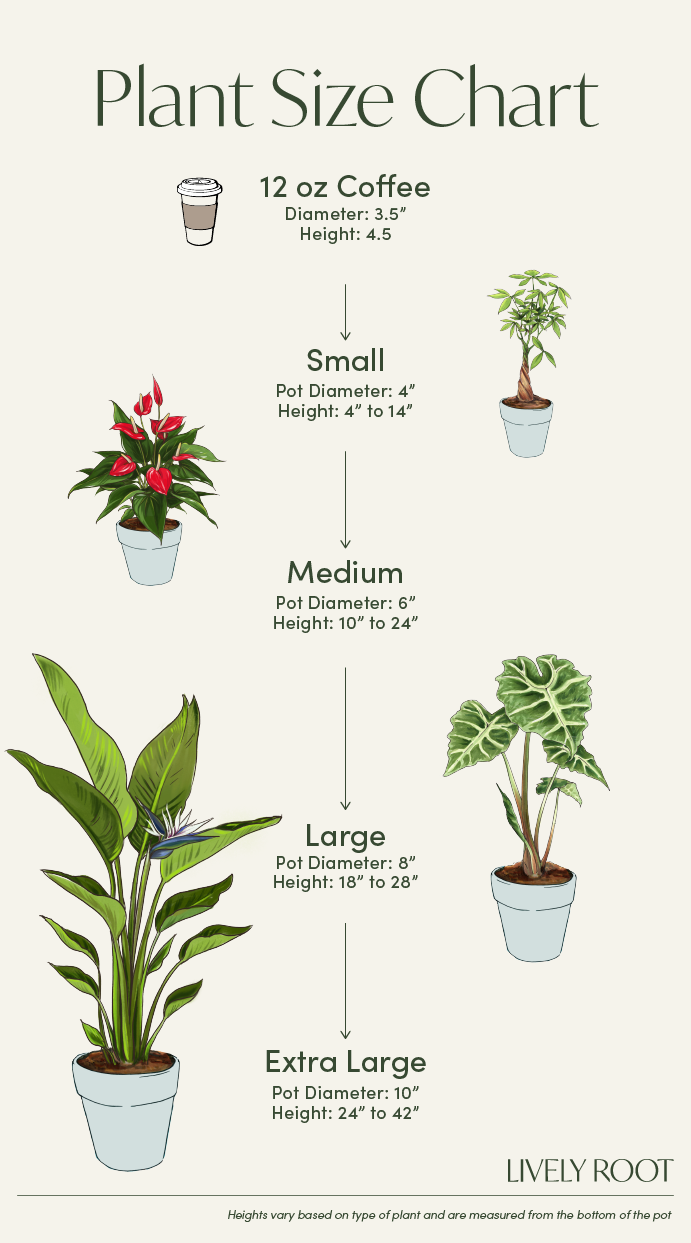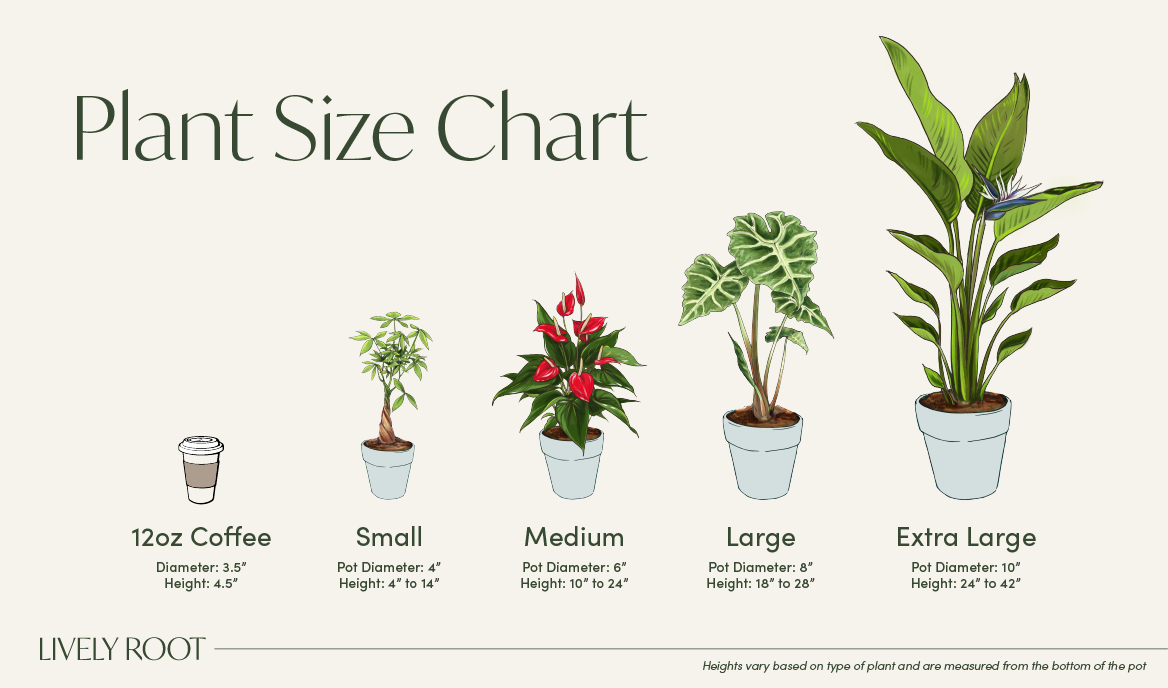

The Variegated Hoya Heart (Hoya Kerrii) gets their common name from the shape of a single green leaf. Normally vining, this single heart-shaped leaf was rooted without nodes to maintain their single statuesque form. The thick semi-succulent leaves prefer bright indirect light.
This plant is actually a living, rooted leaf. If they do happen to grow, you are one of the lucky ones!
Hoya Heart Variegated Care Guide & Presentation

This plant can tolerate medium light conditions but will bloom in brighter indirect light. If they aren't growing, move them to a brighter light condition.
Treat this one as your other succulents. They are a hardy and undemanding plant but still needs watering when the soil dries on top. Water and let drain well approximately every 7-10 days depending on the climate, pot size location, and your home's indoor temperatures. Water less frequently in the winter during dormancy.
Average humidity levels in the home that reach 40% are sufficient for this plant. Although, it is not mandatory. A pebble tray underneath the pot is sufficient to humidity levels high enough.
Growth is optimum for the Hoya when the temps are warmer. Keep away from cool drafts.
Protect them from temperatures below 50°F.
This plant is pretty self-sufficient in fertilization. Use succulent fertilizer twice during the growing season.
When receiving the Hoya kerrii (Sweetheart Plant), do not repot immediately but wait at least 6-12 months. Repot every three to four years or when the roots are beginning to get crowded and growing through the drainage holes. With young plants with only one leaf, they may never grow past their current size to maintain their statuesque form. Otherwise, a vining hoya will bloom when their roots are snug within the pot so there is no hurry.
Repot in the spring, using a 2 inches bigger pot with drainage holes to keep the roots drier. Place a piece of screening at the bottom of the container over the drainage hole to secure the soil and allow to drain. Use cacti and succulent potting mix or an aerated soil mixture to prevent any root rot in this indoor plant.
Add the cactus and succulent soil mix to the bottom to elevate the root ball. Lift the plant and release the roots against the existing planter. Use a clean knife or garden trowel to wedge between the pot and the soil to loosen. Inspect the root ball. Notice if there are any dead or rotting roots and trim off with sterile pruners. If the plant is rootbound, cut through the roots to alleviate continued encircling. Ensure the plant is sitting about 1 inch below the edge of the pot to avoid water spillage. Add more soil and backfill around the sides by tamping down. Fill up to the soil line but not over. Water thoroughly, and let the pot drain. If settling occurs, add more soil.
For single leaf Hoyas, a simple wipe with a clean cloth will do. If you have a vining Hoya, after flowering, do not remove the stalks from which the blooms will emerge next season. To control size or length of vine, prune during the spring and use the cuttings to propagate. To clean, shower them with filtered water or non-fluoridated water.
If you have a vining plant versus a single leaf, you can propagate and divide Hoya kerrii plants in the early spring when emerging from dormancy. Pull from the container and brush or wash away the soil carefully around the roots. Carefully divide and repot in a cactus and succulent mixture. Use a container that has good drainage. Layering is also an option. Since the stems have tiny roots protruding out, pin a branch to a pot with moistened soil and keep them moist until they take root. At that time, you can clip the stem away from the mother plant. Set them in medium to bright, indirect sunlight while they are rooting. Check the moisture weekly and water as before, letting the soil dry a bit between waterings. After 6-8 weeks, roots will begin to establish. You can tug onto the stem to ensure the roots are anchoring well. These plants are slow starters, but once they establish their roots, they will produce vines quickly, and new leaves will form.
Hoya Kerrii Variegated: Overview
The tiny and cute Variegated Hoya Heart (Hoya kerrii) is a unique, single-leaf, otherwise vining Hoya kerrii variety, deep green in the middle, with butter-yellow stripes on the sides. It retains its adorable heart shape and doesn’t grow any further leaves. Typically, Hoya kerrii is a vining, heart-shaped, flowering hoya plant, but when grown from a leaf cutting, it stays compact and looks like a tiny green heart. Hoya Kerrii Variegated is a succulent, known as Hoya Heart, Lucky Heart Plant, Sweetheart Plant, and Valentine Hoya.
This tropical plant is native to Asia and grows in China, Cambodia, and Java. The delightful single-leaf Variegated Hoya Heart plant is ideal for desktops and shelves, growing only 6 inches tall. It can also be grown as a porch plant in USDA Hardiness Zone 11. A Hoya Heart Leaf will usually not be as long-lived as a Hoya vine, which often lives for up to 30 years, but if given the proper care, these lovely heart-shaped plants will remain fresh and green. Hoya Kerrii Heart needs plenty of bright sunlight but is otherwise easy to care for. In addition, cat or dog owners should know this little gem is entirely safe for pets.
The Heart Leaf Hoya symbolizes love and devotion - a love letter from nature; no wonder these charming plants make the perfect gift for significant others.
If you’re looking for larger hoya plants, consider getting the speckled Hoya Pubicalyx Splash or the whimsical Hindu Hoya Rope Plant - beautiful trailing vines with fragrant flowers.
Hoya Plant: Benefits
- Excellent air-purifying plant that produces oxygen and filters air toxins
- Perfect gift, especially on Valentine’s Day
- Symbolizes love and affection
- Hoyas are safe for dogs and cats
- Great for shelves and desks
- Easy to care for and drought-tolerant
Hoya Kerrii Variegated: Care Guide
It’s not difficult to care for the Variegated Kerrii Hoya. Follow these Hoya Kerrii Variegated care tips to help your Hoya Heart thrive.
Watering and Humidity
As a semi-succulent, the Hoya Kerrii Heart Variegated plant stores water in its leaves, and this single-leaf variety stores all of it in its one available leaf. Its root system isn’t large enough to absorb too much water, and overwatering can lead to root rot. So water sparingly and only when the top soil layer is dry. Decrease watering in winter.
The Variegated Heart Hoya will thrive in average indoor humidity (about 40%). Still, if your indoor air tends to dry, provide a pebble-filled tray to increase humidity around this cute small plant.
Light and Temperature
Your Hoya Kerrii Variegated plant prefers bright, indirect light. This Hoya Heart is variegated, and its bright greens and yellows will stand out better if it receives sufficient light. That said, this easy-care plant can also tolerate medium light. Keep this adorable indoor plant in warm, comfortable temperatures, approximately 60℉ to 80℉. If you’re growing it outdoors, bring it inside if the temperature falls below 50°F.
Soil, Feeding, and Repotting
The Variegated Heart Leaf Hoya needs well-draining soil. Use a succulent soil mix or add perlite or sand to enhance drainage. While a vining Hoya Kerrii needs repotting every 3 years, the single-leaf Hoya will likely stay the same size without growing any larger, so simply replenish the soil. The Hoya Heart doesn’t need frequent fertilizing. It’s enough to feed with a succulent fertilizer twice during the growing season.
Propagation
Hoya kerrii is easy to propagate via division in spring or by planting a branch with roots. However, you can’t propagate a single-leaf Hoya Heart like a vining Hoya kerrii. Because it has been rooted as a leaf without nodes, it cannot develop any stems or grow new leaves.
Pruning, Cleaning, and Common Issues
Hoya Hearts are extremely low-maintenance since they do not require pruning or trimming. Just wipe your Hoya Sweetheart Variegated plant with a slightly damp cloth occasionally to remove dust. Overwatering and the resulting root rot are the most common issues to watch out for.
Variegated Hoya Heart: Placement, Companion & Alternative Plants
The miniature Hoya Heart succulent will fit on any desk or shelf, reminding you of its powerful message of love and affection with its charming heart shape.
Best Locations & Uses
- Perfect for compact spaces, shelves, and desks
- A popular gift for a loved one
- Great for plant lovers with pets
- Amazing low-maintenance office plant
- Ideal easy-care plant for beginners
Companion Plants
Combine your Variegated Sweetheart Hoya with other small plants to create a tiny desktop garden.
- Peperomia Santorini (Peperomia 'Santorini'): The easy-care and pet-friendly Peperomia Santorini has silver-grey, textured leaves with reddish stems and leaf undersides.
- Echeveria Elegans Succulent (Echeveria elegans): Shaped like a small rosette, the succulent Echeveria Elegans is a low-maintenance beauty with tiny but lovely flowers.
- Funckiana Air Plant (Tillandsia): The unusual-looking Funckiana Air Plant gets its nutrients from the air and doesn’t need soil; it can be mounted on a piece of driftwood or shell.
Alternative Plants
Other beautiful heart-shaped plants that will fit perfectly on your desk or shelf include:
- Hoya Heart Plant (Hoya kerrii): The green variety of the Hoya Heart Plant looks like a small sculpted heart and remains the same compact size without developing a vine and other leaves.
- Flamingo Flower (Anthurium spp. – Red): With its bright red blooms, the Flamingo Flower is a striking tropical beauty that appreciates high humidity and medium light.
- Heart Leaf Fern (Hemionitis arifolia): An unusual fern from Southeast Asia, the Heart Leaf Fern has leathery, heart-shaped leaves and grows best in warm and humid environments.
Get Your Variegated Hoya Kerrii From Lively Root Now
Brighten up your day with an enchanting Hoya Kerrii Variegated for sale from Lively Root!
























